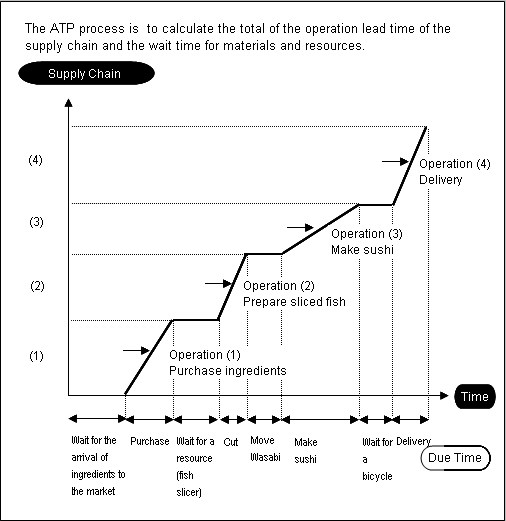ATP (Available to Promise)
2008.05.13
ATP is an important concept in supply chain management, meaning to quote an available quantity and a delivery date for an order from a customer. There are various methods and levels of determining the quantity and delivery date depending on circumstances.
"ATP (Available to Promise)" may literally mean "delivery commitment limit" but probably the closest word used in the Japanese manufacturing industry is "delivery quotations". In other words, ATP information contains quantities and due dates for which delivery can be committed. If you can determine how you allocate (schedule) materials and resources such as machines and workers to actual demand and forecast demand, you can quote delivery dates based on that information.
"Real-time ATP" means to create a production schedule in real time even for one order (speculative demand or an inquiry) using SCM software and according to the operation capacity and material inventory constraints of the supply chain.
"Delivery quotations" is an important concept in Supply Chain Management (SCM). For ATP in cases of Make to Stock (MTS) where finished goods inventory exists, you need to allocate the inventory for an order and calculate the delivery lead time. In cases of Make To Order (MTO), you need to determine the production lead time based on a schedule within the range of usable parts, materials and resources, and determine ATP.
When a sushi chef receives an order for delivery of sushi, he instantly determines (processes information) whether the ingredients (materials) are available, which worker (resource capacity) is available, and which vehicle, bicycle or motorbike, should be used for delivery, and determines firm ATP about a due time and quantity such as "an hour and a half later at 7:30" for "5 sets of special sushi course".
Depending on production patterns from Make to Stock (MTS), Assemble To Order (ATO), and to Make To Order (MTO), there are various levels for calculating ATP. For example, calculating ATP for sushi orders theoretically includes the lead time of purchasing ingredients and catching the fish. Therefore, the lead time needs to be calculated considering the wait time and setup time that can be a factor of inventory under constraints of operation capacity and materials, which are the target for supply chain management.
Real-time ATP can be realized by consecutive scheduling using integrated databases of the supply chain.

"Understand Supply Chain Management through 100 words" by Zenjiro Imaoka.
Published by KOUGYOUCHOUSAKAI
